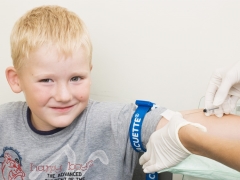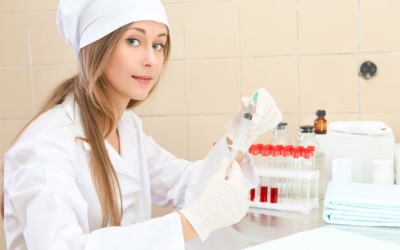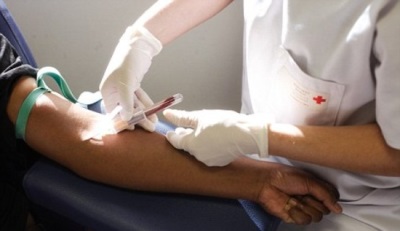Biochemical blood test in children
In contrast to the general analysis, biochemical blood tests are carried out only according to indications. And when such a test is prescribed to a child, mothers are interested in why this analysis is needed and what can be determined from it.
Why is it needed?
Determining the biochemical parameters of blood is important for assessing the performance of the baby’s body. These parameters are constant for children of the same age and vary with diseases, therefore, based on them, one can judge the health of vital organs and systems in the body of the baby. About others child blood tests read in another article.
Indications
This analysis is prescribed if:
- Hereditary diseases are suspected;
- It involves damage to the internal organs of the child due to various diseases;
- They want to determine the cause of jaundice in a newborn;
- Suspect intrauterine infection;
- They are going to clarify the diagnosis;
- They want to check the effectiveness of treatment.
Training
Since the study is conducted on an empty stomach, the child should not eat food and drinks other than water for 8-12 hours before the manipulation. Going with the child to such an analysis, choose clothes for him that will not prevent the nurse from getting to the ulnar vein. Do not forget to also talk to the baby about the upcoming manipulation, so that he understands why you need to prick a pen and that the inconvenience will be only temporary.
How to take blood?
In newborns, blood is drawn from the heel with a thin needle. In children older than a month, blood is taken from the cubital vein. Plot a little higher pinch the tourniquet so that the pressure in the vein increased and the vessels filled up more. After treatment with antiseptic agents, a needle is inserted into a vein and blood is drawn into a syringe or a special tube. After removing the needle, a cotton swab is applied to the injection site and the arm is bent at the elbow.
Where can I take the analysis?
Manipulation is carried out in the treatment rooms of children's clinics or hospitals. Also, biochemical blood parameters can be determined by contacting private laboratories.
Indicators of the norm and transcript
The list of biochemical parameters that can be assessed by analyzing a child’s blood is quite large. The study of many of them is carried out only with certain indications. In most cases, biochemical analysis includes the following data:
|
Indicator |
Its meaning |
Newborns |
In children from 2 months to a year |
In children older than a year |
|
Total protein |
Shows the total protein content in a child’s blood. |
45-70 g / l |
51-73 g / l |
from 12 to 24 months - 56-75 g / l; over 24 months - 62-82 g / l |
|
Albumins |
They are one of the blood protein fractions, they are responsible for the transfer of various substances (hormones, drugs, bilirubins, fatty acids, and others), as well as for maintaining pressure. |
30-45 g / l |
35-50 g / l |
37-55 g / l |
|
Globulins |
They are also a protein fraction and are represented by 4 types. They are involved in the transport of hormones and trace elements, the work of enzymes, the functioning of the immune system. |
25-35 g / l |
25-35 g / l |
25-35 g / l |
|
C-reactive protein |
One of the indicators of the activity of inflammation. It is taken into account in the diagnosis of rheumatism. |
Missing |
Missing |
Missing |
|
Total bilirubin |
Pigment that appears due to the breakdown of heme in hemoglobin. |
17-68 µmol / l |
8.5-21.4 μmol / l |
8.5-21.4 μmol / l |
|
Bilirubin bound |
Pigment, which is connected in the liver cells with glucuronic acid. It is also called direct. |
4.3-12.8 μmol / l |
0.83-3.4 μmol / l |
0.83-3.4 μmol / l |
|
Free bilirubin |
A very toxic form of bilirubin, which is also called indirect bilirubin. Identifying these forms separately is important for the differential diagnosis of jaundice. |
12.8-55.2 μmol / l |
2.56-17.3 μmol / l |
2.56-17.3 μmol / l |
|
ALT |
Enzyme, which is attributed to aminotransferases. Its definition is important for the diagnosis of liver disease. |
Less than 40 U / l |
Less than 40 U / l |
Less than 40 U / l |
|
AST |
Another enzyme of the class of aminotransferases, the amount of which is determined to assess the state of the liver. |
Less than 40 U / l |
Less than 40 U / l |
Less than 40 U / l |
|
Alkaline phosphatase |
An enzyme that helps to detect acute leukemia at an early stage. |
Less than 150 U / l |
Less than 644 U / l |
Less than 644 U / l |
|
Glucose |
Monosaccharide, which is formed in the body as a result of digestion of all carbohydrates. It acts as a source of energy for cells. |
From 1.7 to 4.7 mmol / l |
From 3.3 to 6.1 mmol / l |
From 3.3 to 6.1 mmol / l |
|
Creatinine |
A compound that is formed as a result of protein metabolism in muscle tissue. Its level is important in diagnosing the condition of the kidneys. |
From 35 to 110 mmol / l |
From 35 to 110 mmol / l |
From 35 to 110 mmol / l |
|
Urea |
A substance that appears during the breakdown of protein molecules. The level of urea is taken into account when determining the state of the kidneys. |
2.5-4.5 mmol / l |
3.3-5.8 mmol / l |
4.3-7.3 mmol / l |
|
Lipids |
Show the total amount of fat in the baby’s blood. |
4-5 g / l |
5-7 g / l |
5-7 g / l |
|
Cholesterol |
Organic matter of the fat group, important for cell membranes and hormone synthesis. |
1.6-3 mmol / l |
1.8-4.9 mmol / l |
3.7-6.5 mmol / l |
|
Triglycerides |
One of the types of lipids most common in the body. |
0.2-0.86 mmol / l |
0.39-0.93 mmol / l |
0.4-1.86 mmol / l |
|
Beta lipoproteins |
Protein substances responsible for the transport of lipids. |
1.5-3.5 g / l |
1.4-4.5 g / l |
3.5-5.5 g / l |
|
Potassium |
One of the vital elements affecting the acid-base balance, muscle contraction, the transport of substances through the cell membrane, activation of enzymes. |
4.5-6.5 mmol / l |
4-5.6 mmol / l |
3.6-5.1 mmol / l |
|
Calcium |
The element that affects bone health, cardiovascular function, blood clotting, muscle contraction and many other processes. |
2.2-2.5 mmol / l |
2.3-2.8 mmol / l |
2.3-2.8 mmol / l |
|
Sodium |
Element important for the formation of gastric juice, kidney work, alkaline blood balance. |
135-155 mmol / l |
133-142 mmol / l |
132-156 mmol / l |
|
Phosphorus |
An element that is involved in biochemical reactions in the body, and also important for teeth and bones. |
1.8-2.7 mmol / l |
1.3-2.3 mmol / l |
1-1.8 mmol / l |
Compared with adult norms, babies have less cholesterol, a different ratio of lipid fractions, lower glucose levels and more lactic acid.
Causes of deviations
Possible causes of changes in blood biochemical parameters are:
|
Indicator |
Above normal |
Below normal |
|
Total protein |
Infectious diseases; Extensive burns; Tumors; Autoimmune diseases; |
Hypotrophy; Depletion; Diseases of the liver and intestines; Oncological processes; Bleeding; Fever; Inflammatory processes; Kidney disease causing loss of proteins in the urine; Intoxication; Injuries; |
|
Albumins |
Dehydration; Burns a large area; |
Liver disease; Glomerulonephritis; Injuries and bleeding; Diseases of the digestive tract; Starvation; Tumors; Sepsis; Malabsorption syndrome; |
|
Globulins |
Inflammatory processes; Oncological diseases; The postoperative period; Infectious diseases; |
Hemolytic anemia; Liver disease; Kidney disease; Immunodeficiency; Malignant tumors; |
|
Total bilirubin |
Different types of jaundice |
Taking vitamin C |
|
Bilirubin bound |
Obstructive jaundice; Liver damage; |
- |
|
Free bilirubin |
Hemolytic jaundice; Liver damage; |
- |
|
Aminotransferase |
Liver cell damage; Hemolytic jaundice |
- |
|
Glucose |
After sugary drinks and meals; Stress; Neuroendocrine disorders; Diabetes; Diseases of the pituitary gland; Enhance thyroid function; Liver disease; Pheochromocytoma |
Unbalanced nutrition; Dehydration; Strong physical exertion; Starvation; Insulinoma; Renal failure; Congenital disorders of insulin production; Sepsis; Liver failure; |
|
Urea |
Dehydration; Unbalanced nutrition; Renal failure; Kidney inflammation; Burns; Intestinal obstruction; Bleeding in the digestive tract; Parenchymal jaundice |
Lack of protein in food; Increased protein breakdown; Celiac disease; Liver damage |
|
Creatinine |
Acute and chronic kidney disease; Thyrotoxicosis; Use of certain drugs; Muscle injuries. |
- |












